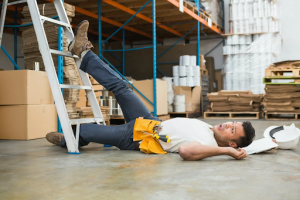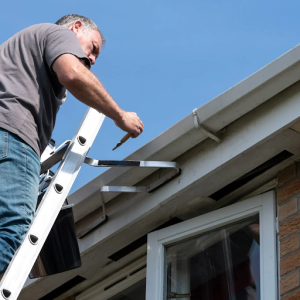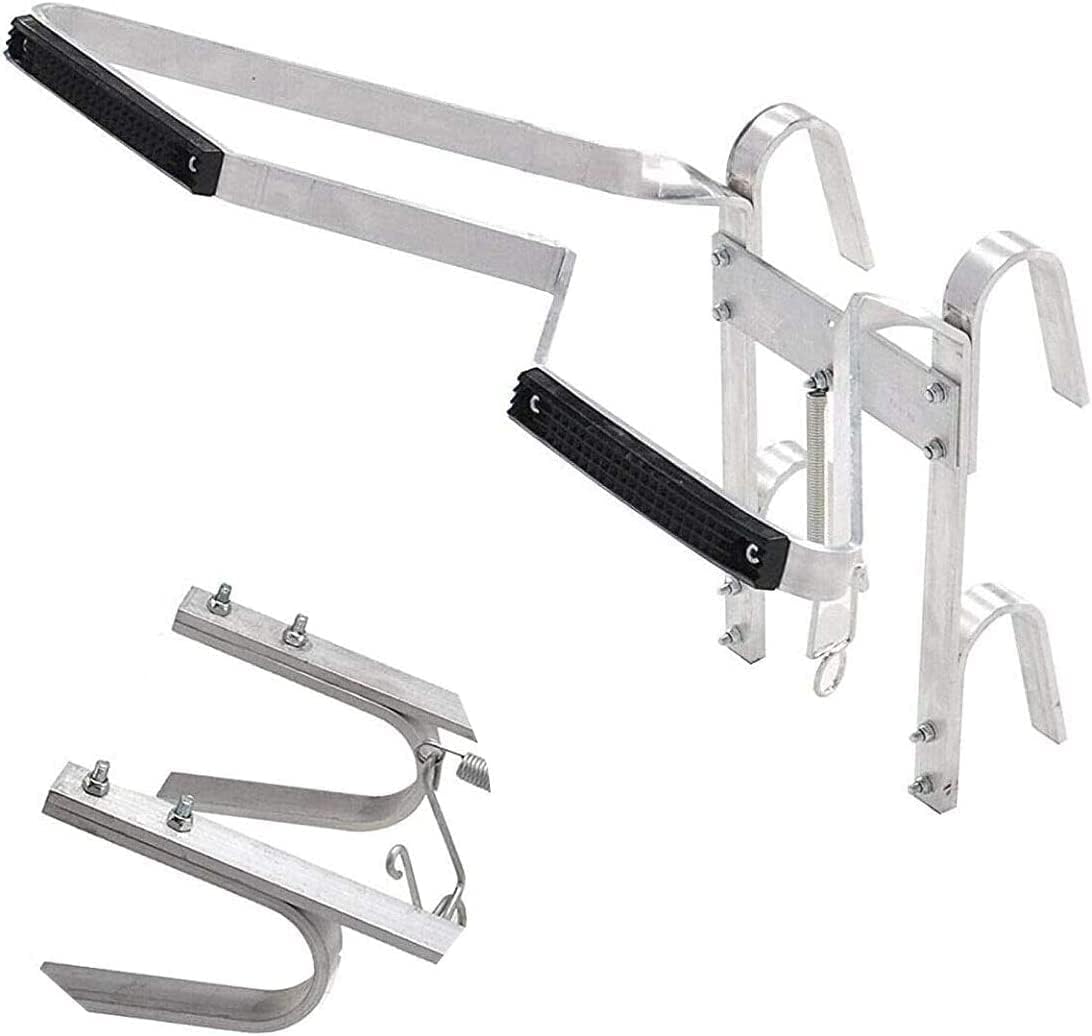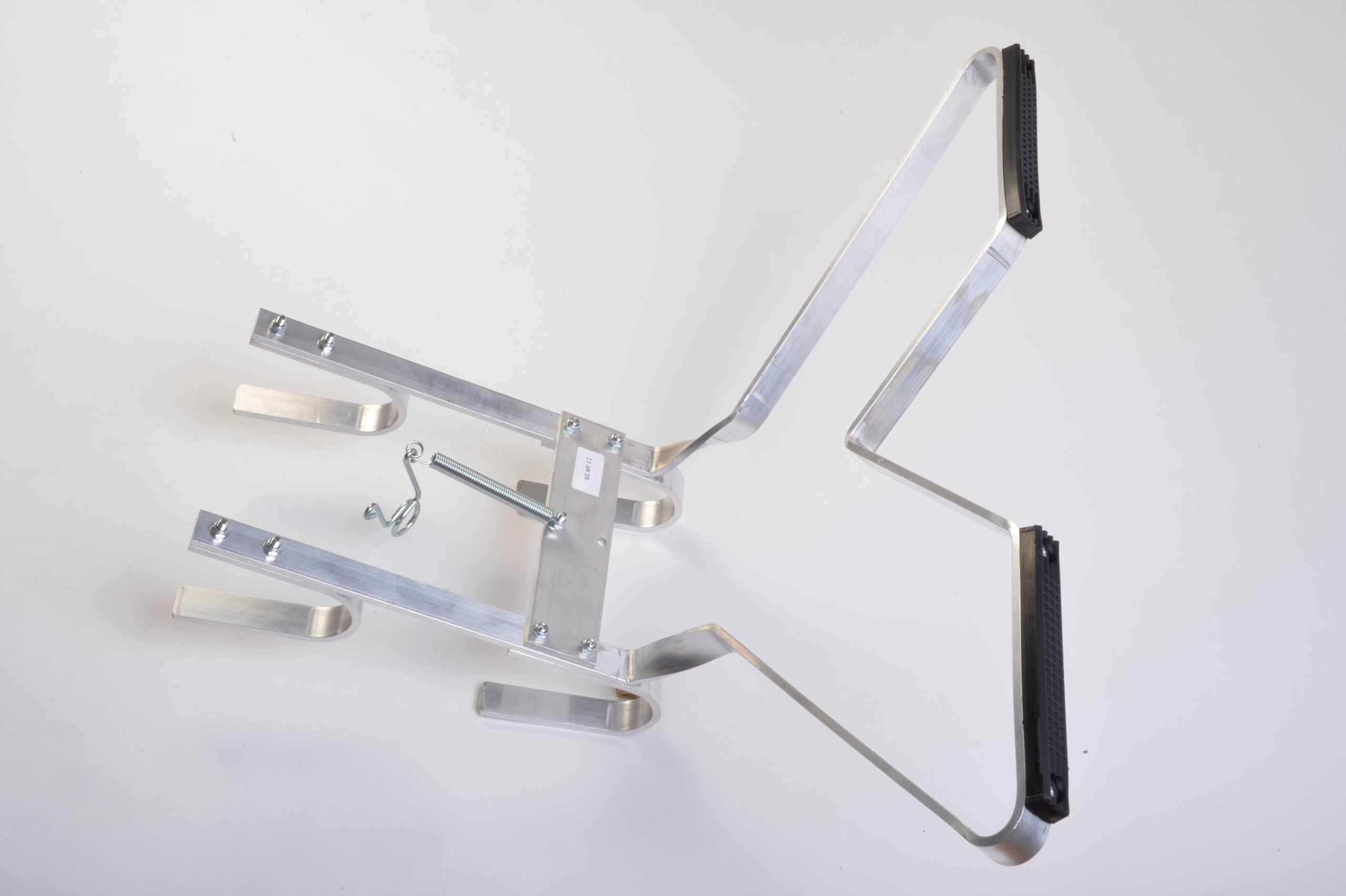Top Ladder Safety Mistakes and How a Stand-Off Can Prevent Them
Working at height is part of everyday life for roofers, painters, builders, and maintenance professionals. But while ladders are one of the most common tools on site, they’re also one of the leading causes of workplace injuries. Most ladder accidents happen not because of equipment failure, but because of small, avoidable mistakes, from poor positioning to using the wrong accessories. Therefore having knowledge related to ladder safety is very important.
A simple solution to many of these problems is a ladder stand-off. This clever attachment enhances ladder stability, keeps you clear of gutters and windows, and ensures a safer, more comfortable working angle. In this blog, we’ll explore the top ladder safety mistakes people make and how a ladder stand-off can help prevent them.
Why Ladder Safety Matters More Than You Think
According to the UK’s Health and Safety Executive (HSE), ladder-related accidents account for thousands of injuries every year. The majority occur because the ladder slips or the user loses balance. Even a short fall can result in serious harm, making safety not just a priority but a necessity.
Ladder safety starts with proper equipment setup, secure footing, and accessories that enhance stability. A ladder stand-off bracket is one of the simplest yet most effective ways to improve safety when working at height.

Common Ladder Mistakes and How to Prevent Them
Placing the Ladder at the Wrong Angle
One of the most common ladder safety mistakes is incorrect positioning. Setting your ladder too steep makes it unstable, while too shallow a slope can cause it to slip away from the wall.
A ladder stand-off helps prevent this by extending the top of the ladder away from the surface, creating the ideal working angle. It also allows the ladder to rest on a wider contact area, which reduces the risk of wobbling or tipping.
Tip: The correct ladder angle should follow the 4-to-1 rule for every four feet of height, the ladder base should be one foot away from the wall.
For more details, read How to Use Ladder Stand-off Safely.
Leaning Against Fragile or Uneven Surfaces
Many users lean their ladders directly against gutters, window frames, or other weak structures. This not only risks damaging property but also puts the ladder in an unstable position.
Using a ladder stand-off bracket keeps the top of the ladder clear of delicate surfaces while maintaining a firm grip on stronger points, like brickwork or fascia boards. It also ensures your weight is evenly distributed critical for maintaining balance on roofs or uneven ground.
For example, our V-Shaped Ladder Stand-Off is designed to rest securely on building corners or around downpipes without slipping. Its aluminium frame provides the perfect balance between lightweight handling and heavy-duty strength.
Not Checking Ladder Stability Before Climbing
Another frequent error is climbing before ensuring the ladder is stable. Even a slight unevenness at the base can cause the ladder to rock or slide.
By attaching a ladder stand-off, you add an additional stabilising point at the top. The wider grip reduces side-to-side movement, particularly on windy days or when working at height for extended periods.
Combined with anti-slip pads at the base, a stand-off dramatically increases ladder stability, giving you the confidence to focus on your work, not your balance.
Working Too Close to the Ladder
Leaning sideways while reaching for a spot just out of reach is one of the most dangerous ladder behaviours. This can shift your centre of gravity and cause the ladder to tip.
A ladder stand-off gives you extra reach by positioning the ladder further from the wall, allowing you to work comfortably and directly in front of your task area whether cleaning gutters, painting walls, or inspecting rooflines.
When paired with Kirmell’s heavy-duty aluminium stand-off, you’ll find that tasks like gutter cleaning become safer and faster, with less strain on your arms and back.
Mistake: Using the Wrong Ladder for the Job
Not all ladders are created equal and neither are stand-offs. Using the wrong type of ladder (e.g., one too short or not rated for your load) is a common cause of accidents.
A stand-off can make certain ladders more versatile by increasing their usability for multiple jobs roofing, painting, window work, and more. For example, a V-shaped stand-off is perfect for corners, while a straight-bar stand-off suits flat surfaces like walls and soffits.
Ignoring Weather and Surface Conditions
Wind, rain, and debris are major contributors to ladder accidents. Even if your ladder is positioned correctly, external factors like slick surfaces or gusty conditions can destabilise it.
A ladder stand-off adds stability by widening the top support points, making it less likely to slip in light wind or rain. For outdoor work, pairing a stand-off with non-slip rubber ladder feet is highly recommended.
Remember: never use metal ladders near electrical sources, and avoid working at height during strong winds.
Overreliance on Improvised Supports
It’s surprisingly common to see people resting ladders on unstable objects like bins, window sills, or even vehicles. This is extremely unsafe.
A proper stand-off bracket eliminates the need for makeshift supports. Designed for professional use, it gives your ladder a secure contact point every time. The adjustable fittings on Kirmell’s V-Shaped Ladder Stand-Off make it easy to attach or remove without tools, saving both time and effort.
Skipping Ladder Inspection and Maintenance
Even the best ladders require regular inspection. Damaged rungs, bent rails, or worn rubber feet can make your setup unsafe. Adding a stand-off won’t fix a faulty ladder, but it can reduce stress on the top section and help extend your ladder’s life.
At Kirmell, our ladder accessories are made from durable, corrosion-resistant materials, ensuring long-term reliability. Check your equipment regularly for cracks, rust, or loose fittings, and always replace worn parts immediately.

How a Ladder Stand-Off Improves Safety and Efficiency
Using a ladder stand-off is more than just a safety precaution it’s a performance upgrade. Here’s how it helps professionals and DIY users alike:
- Increases Ladder Stability: Creates a wider, more stable top contact area.
- Prevents Damage: Keeps ladders clear of gutters, pipes, and windows.
- Enhances Reach: Allows a better working angle without overstretching.
- Improves Comfort: Reduces body strain by maintaining natural posture.
- Saves Time: Quick to attach, lightweight to handle, and easy to store.
These benefits make the stand-off one of the most valuable ladder accessories for anyone working at height.
Choosing the Right Ladder Stand-Off
When buying a stand-off, consider the type of work you do, the surfaces you’ll rest against, and the ladder size.
- V-Shaped Stand-Offs: Best for corners, downpipes, and irregular surfaces.
- Straight Bar Stand-Offs: Ideal for flat walls and even surfaces.
- Wide-Span Stand-Offs: Provide extra clearance and maximum stability for roof access.
All Kirmell stand-offs are made from lightweight aluminium for easy handling and are compatible with most extension ladders used across the UK.
Why Choose Kirmell Ladder Stand-Offs
Kirmell’s ladder accessories are British-made, designed with precision engineering and ISO-certified quality standards. Each stand-off is built for safety, reliability, and long-term performance.
Our V-Shaped Ladder Stand-Off features a durable aluminium body with protective end pads to prevent damage to walls and roofs. Its universal fitting makes it compatible with most ladder models, offering instant stability for both professionals and homeowners.
By choosing Kirmell, you invest in trusted UK craftsmanship, fast local support, and components that last. We pride ourselves on providing safety equipment that meets the demands of modern industry without compromise.
Conclusion
Ladder accidents are often the result of small, avoidable mistakes, but with the right tools and habits, they’re entirely preventable. A ladder stand-off is one of the simplest ways to make your ladder work safer, steadier, and more efficient.
By preventing slips, protecting surfaces, and giving you better reach, a stand-off transforms how you use your ladder. Whether you’re a tradesperson, contractor, or DIY user, investing in a quality Kirmell stand-off means investing in your own safety and peace of mind.
Explore our full range of ladder stand-offs today and take the next step toward safer work at height.






Leave a Reply
Want to join the discussion?Feel free to contribute!